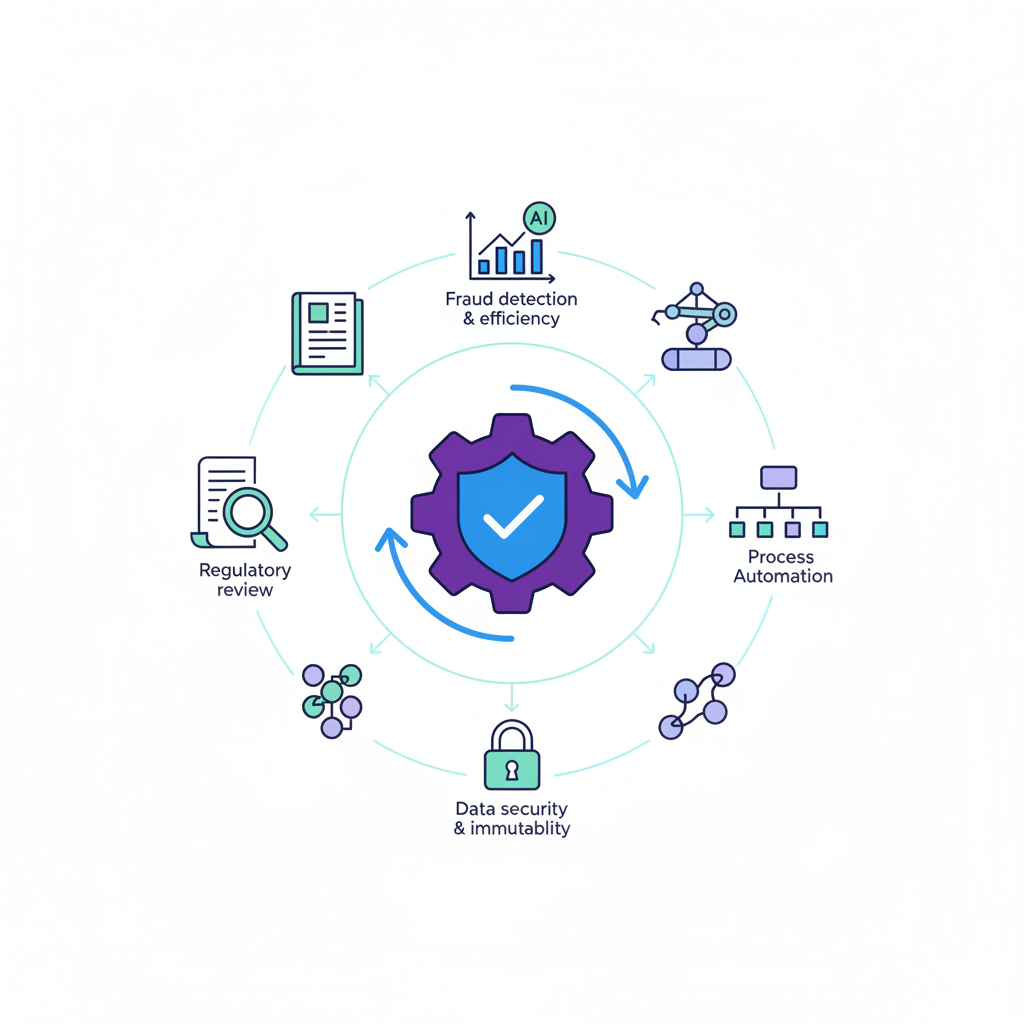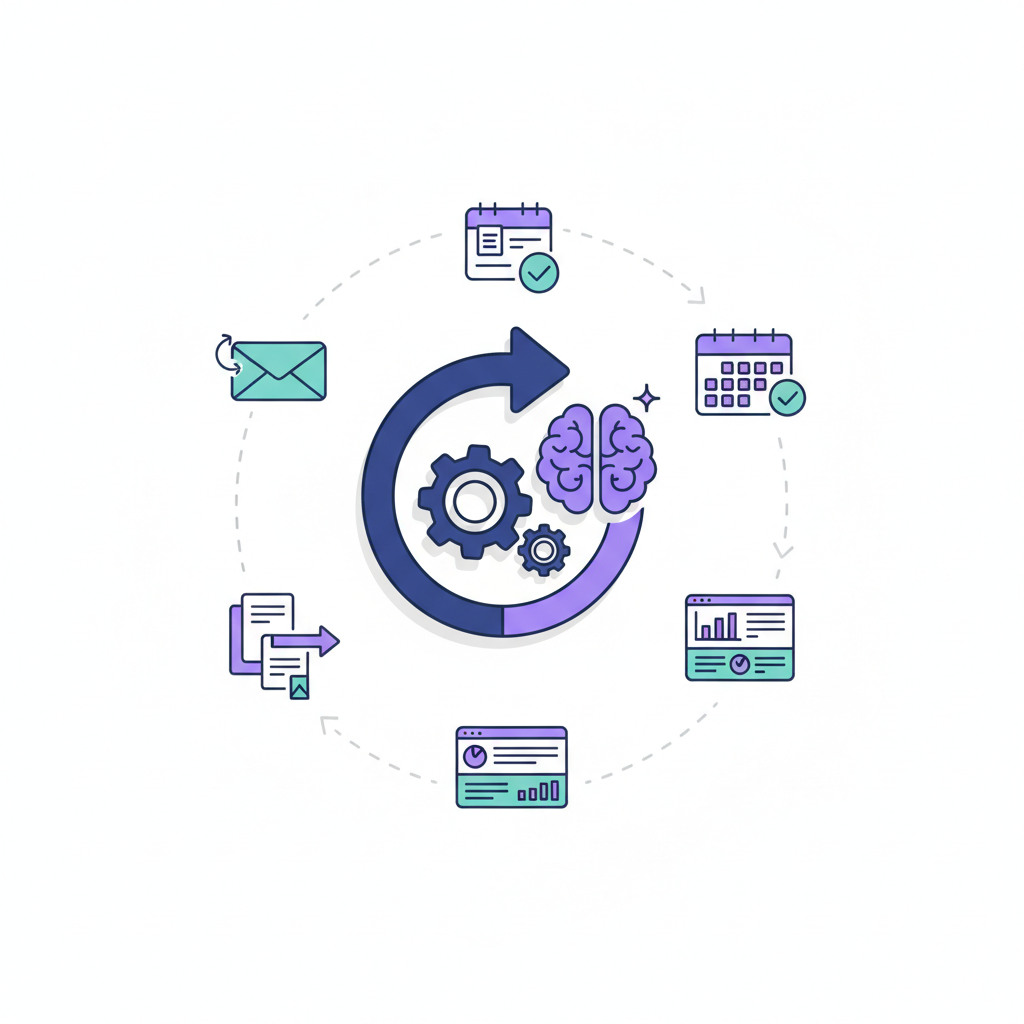Unlocking AI's Full Potential: The Power of Prompt Engineering
The promise of artificial intelligence is vast: intelligent assistants, creative collaborators, and powerful problem-solvers at our fingertips. Yet, for many, the reality of interacting with large language models (LLMs) like GPT-4 often falls short of this potential. Generic prompts frequently yield generic, uninspired, or even inaccurate AI outputs. We’ve all experienced the frustration of an AI response that misses the mark, lacks nuance, or simply isn't what we envisioned. The challenge lies in consistently achieving nuanced, creative, and contextually appropriate AI responses that truly leverage the sophisticated capabilities of these models.
This gap between AI's potential and its practical application is precisely where prompt engineering emerges as an essential skill. Prompt engineering is the art and science of crafting inputs (prompts) that guide an AI model to generate the desired output. It’s the secret sauce for unlocking the full power of LLMs, transforming vague requests into precise instructions that lead to perfect AI outputs. As AI technology rapidly advances, the ability to communicate effectively with these systems becomes paramount.
This blog post will serve as your comprehensive guide to mastering this critical discipline. We will unveil 26 fundamental principles, structured within a progressive mastery framework, designed to significantly increase LLM accuracy and the quality of your AI interactions. From foundational concepts to advanced strategic optimizations, these principles will equip you with the tools to elicit superior results from any LLM. For AI experts, developers, content creators, and everyday users alike, understanding and applying prompt engineering is no longer optional; it is the key to harnessing AI's transformative power and ensuring your AI outputs are consistently exceptional.
The Prompt Engineering Mastery Framework: Foundational Principles (1-8)
Embarking on the journey of prompt engineering mastery begins with a solid understanding of foundational principles. These aren't just arbitrary rules; they are rooted in how LLMs process information, interpret intent, and generate responses. By internalizing these prompt design principles, you lay the groundwork for consistently achieving higher quality and more relevant AI outputs, thereby significantly increasing LLM accuracy. This structured approach guides users from basic interactions to more sophisticated control over AI behavior. Understanding the 'why' behind these principles – how word choice and structural elements influence an LLM's internal reasoning – is crucial for developing effective prompt engineering best practices. These initial 8 principles are the bedrock of effective communication with any LLM, forming the core of the 26 prompt engineering principles we will explore.
Clarity, Specificity, Context, and Role-Playing (Principles 1-8)
- Principle 1: Be Explicit and Direct. Avoid ambiguity at all costs. State your intentions clearly and unequivocally. Rather than "Write something about marketing," try "Write a 200-word blog post introduction about the importance of digital marketing for small businesses." This principle ensures the AI understands the core task without needing to infer.
- Principle 2: Use Clear, Concise Language. Employ simple vocabulary and active voice. Avoid unnecessary jargon unless specifically required. Long, convoluted sentences can confuse the AI, leading to less precise responses. Good word choice is paramount; every word should serve a purpose.
- Principle 3: Define the Task Precisely. Clearly state 'what' needs to be done, 'why' it needs to be done, and 'how' it should be executed. For example, instead of "Summarize this article," specify: "Summarize the attached research article for a non-technical audience, highlighting the key findings and their implications, in no more than five bullet points."
- Principle 4: Specify the Desired Output Format. Always tell the AI how you want the information presented (e.g., JSON, bullet points, a table, a code snippet). For instance, "Provide the pros and cons of remote work in a two-column markdown table."
- Principle 5: Provide Sufficient Context. Give the AI all necessary background information or relevant data. If you're asking for a follow-up, remind the AI of the preceding discussion. "Based on our previous discussion about renewable energy, generate three potential headlines for a news article on solar panel efficiency."
- Principle 6: Assign a Persona or Role to the AI. Instructing the AI to "Act as a senior marketing manager" or "You are a helpful coding assistant" helps the LLM adopt a specific knowledge base and perspective, making its output more tailored and authoritative.
- Principle 7: Define the Target Audience for the Output. Explicitly stating the audience (e.g., industry experts, general consumers, children) ensures the AI tailors the complexity of language and level of detail appropriately. "Explain quantum physics to a 10-year-old."
- Principle 8: Set the Desired Tone and Style. Specify the emotional or stylistic quality you want (e.g., "Formal," "casual," "persuasive," "humorous"). "Write a persuasive argument for adopting a four-day work week, using an optimistic and forward-thinking tone."
These foundational prompt engineering principles are crucial for any user aiming to increase LLM accuracy and achieve more predictable, high-quality results.
Precision and Nuance: Advanced Prompt Design Techniques (Principles 9-16)
Building upon the foundational principles, advanced prompt engineering techniques allow for even greater precision and nuance in your interactions with LLMs. These methods are designed to tackle more complex tasks, refine outputs, and guide the AI through intricate reasoning processes, significantly enhancing LLM performance. Mastering these advanced prompt design principles moves you beyond basic requests, enabling sophisticated control over the AI's generative capabilities. By integrating these strategies, you can achieve a higher degree of AI output quality and unlock new possibilities for prompt optimization. These techniques are vital for anyone looking to truly excel in advanced prompt engineering.
Iterative Refinement, Constraints, and Examples (Principles 9-16)
- Principle 9: Use Iterative Prompting. Engage in a dialogue. Refine your prompt based on the AI's initial output by asking follow-up questions or requesting modifications. Example: "Generate three headlines. Now, make them more engaging and add a call to action."
- Principle 10: Employ Few-Shot Learning. Provide examples of desired input/output pairs within your prompt to teach the AI a specific pattern, style, or format. "Here are examples of customer feedback and their sentiment: 'Great service!' -> Positive; 'Slow delivery.' -> Negative. Now, classify 'Product arrived damaged.'"
- Principle 11: Implement Constraints and Guardrails. Define clear boundaries, forbidden topics, length limits, or specific criteria the output must adhere to. "Generate a product description for a new smartphone, but do not mention battery life or camera megapixels, and keep it under 100 words."
- Principle 12: Ask for Step-by-Step Reasoning (Chain of Thought Prompting). Instruct the AI to "think step by step" or "explain your reasoning process" for complex problems. This often leads to more accurate and logical final answers. "Solve this math problem, showing each step of your calculation."
- Principle 13: Break Down Complex Tasks. Decompose a large, intricate request into smaller, more manageable sub-prompts. This reduces the cognitive load on the LLM and allows for more focused, higher-quality outputs for each component.
- Principle 14: Leverage Negative Constraints. Specify what *not* to do or include. "Write a short story about a detective, but do not include any clichés like a trench coat or a magnifying glass." This steers the AI away from common patterns.
- Principle 15: Use Delimiters for Clarity. When providing multiple pieces of information, use clear delimiters like triple quotes (```), XML tags (
), or markdown headings to help the AI distinguish different parts of your prompt. - Principle 16: Test and Iterate. Systematically test different prompt variations (A/B test different phrasings or instruction orders) to see which yields the best results. Continuous experimentation is key to prompt optimization.
These advanced prompt engineering principles are essential for anyone seeking to push the boundaries of LLM performance and achieve truly sophisticated AI interactions.
Strategic Optimization: Maximizing AI Performance (Principles 17-26)
Moving beyond individual prompt construction, strategic optimization principles focus on maximizing overall AI performance and integrating LLMs into broader workflows. These principles address the nuances of long-term interaction, ethical considerations, and leveraging external tools, pushing the boundaries of prompt engineering mastery. By applying these strategies, you can ensure your AI outputs are not only accurate but also robust, responsible, and continuously improving. This section delves into the more holistic aspects of working with LLMs, from fine-tuning their behavior to understanding their inherent limitations and evolving capabilities. These final 10 principles complete our framework of 26 prompt engineering principles, guiding you toward truly expert-level interaction.
Feedback Loops, Meta-Prompting, and Ethical Considerations (Principles 17-26)
- Principle 17: Request Self-Correction. Ask the AI to critically evaluate and improve its own initial output against specific criteria. "Review your previous summary. Is it concise enough for a busy executive? If not, revise it."
- Principle 18: Implement Meta-Prompting. Write prompts that guide the AI's internal process or instruct it on how to approach a task. Example: "Before generating the content, first outline the main points you will cover, then write the full response."
- Principle 19: Consider AI's Limitations. Acknowledge that LLMs can hallucinate or provide outdated information. Design prompts to mitigate this by asking for sources or specifying recent data. "Provide the latest statistics on renewable energy adoption, citing your sources."
- Principle 20: Use Temperature and Top-P Settings. Adjust these parameters to control the creativity and determinism of the output. Use low temperature (e.g., 0.2-0.5) for factual accuracy and high temperature (e.g., 0.8-1.0) for creative brainstorming.
- Principle 21: Employ Retrieval Augmented Generation (RAG). For factual tasks, retrieve relevant external documents or data first, then feed that information to the LLM as context for its generation. "Using the provided research papers on climate change, summarize the key findings regarding Arctic ice melt."
- Principle 22: Structure for Long-Form Content. For extensive content, ask the AI to first create an outline, then generate content section by section to maintain coherence.
- Principle 23: Incorporate User Feedback Loops. For repeated use, build systems to systematically collect and integrate user feedback to refine prompts and improve model performance continuously.
- Principle 24: Address Bias and Fairness. Actively prompt for balanced, ethical, and unbiased responses. "When discussing hiring practices, ensure your advice promotes diversity and inclusion, avoiding any gender-specific language."
- Principle 25: Stay Updated with Model Capabilities. LLMs are constantly evolving. Keep abreast of the latest developments from providers like OpenAI, Google, and others, as new features unlock new prompt strategies.
- Principle 26: Practice and Experiment. The ultimate principle for mastery is consistent practice. Systematically experiment with unconventional approaches and learn from every interaction.
These strategic principles are designed to elevate your prompt engineering skills, ensuring you achieve peak AI performance and truly perfect AI outputs.
Putting Principles into Practice: Real-World Scenarios
Understanding the 26 prompt engineering principles is one thing; applying them effectively in real-world scenarios is another. The true power of prompt engineering lies in combining these techniques to achieve specific, high-quality AI outputs. Let's explore a few examples that demonstrate how these principles can be integrated to solve common challenges and unlock advanced AI applications. These prompt engineering examples showcase the practical utility of effective prompts and how they contribute to robust AI solutions.
Example 1: Crafting a Marketing Email
Challenge: Write a persuasive marketing email for a new online course on digital photography, targeting aspiring photographers, with a clear call to action and a friendly, encouraging tone.
Combined Principles: 3 (Define Task Precisely), 7 (Define Target Audience), 8 (Set Tone/Style), 4 (Specify Output Format), 5 (Provide Context), 6 (Assign Persona), 11 (Implement Constraints).
Prompt Example:
"Act as an experienced photography mentor. Write a persuasive marketing email for aspiring photographers about a new online course called 'Mastering Light & Shadow.' The course focuses on practical techniques for improving photography skills. Use a friendly and encouraging tone. Mention a 20% discount for the first 50 sign-ups. Include a clear call to action to enroll. Keep the email under 250 words."
Example 2: Generating Code Snippets
Challenge: Generate a Python function to calculate the factorial of a number, including error handling for non-integer or negative inputs.
Combined Principles: 3 (Define Task Precisely), 4 (Specify Output Format), 11 (Implement Constraints), 6 (Assign Persona).
Prompt Example:
"You are a helpful coding assistant. Write a Python function called calculate_factorial that takes one argument, n. The function should return the factorial of n. Implement robust error handling: if n is not an integer or is negative, raise a ValueError with an appropriate message. Provide only the Python code, without any additional explanations or comments."
Example 3: Summarizing Complex Research
Challenge: Summarize a provided scientific abstract about climate change impacts on marine ecosystems for a general audience, highlighting key findings and future implications, in bullet points.
Combined Principles: 3 (Define Task Precisely), 7 (Define Target Audience), 4 (Specify Output Format), 5 (Provide Context), 15 (Use Delimiters), 11 (Implement Constraints).
Prompt Example:
"Summarize the following scientific abstract for a general audience. Your summary should highlight the key findings and future implications of the research, presented in no more than 5 concise bullet points.
```
[Insert Scientific Abstract Text Here]
```
"
These examples illustrate how combining several prompt engineering principles leads to more effective prompts and superior AI solutions. By strategically applying these techniques, users can significantly enhance the quality and relevance of their AI outputs across a wide range of applications, moving closer to achieving truly perfect AI outputs.
Frequently Asked Questions About Prompt Engineering
As the field of AI rapidly evolves, so does the understanding and application of prompt engineering. Here are some frequently asked questions that shed light on common queries and offer practical insights into this crucial skill. These prompt engineering FAQ address key concerns and provide valuable prompt optimization tips for users at all levels.
Q1: What is the single most important prompt engineering principle?
While all 26 principles contribute to mastery, if forced to choose one, it would be Principle 3: Define the Task Precisely. Ambiguity is the enemy of good AI outputs. A clear, unambiguous instruction about 'what' needs to be done, 'why', and 'how' forms the bedrock of any successful prompt.
Q2: How often should I update my prompts?
It depends on your use case and the specific LLM you're using. For critical applications, prompts should be reviewed and potentially updated regularly, especially when new versions of the AI model are released or if you notice a decline in AI output quality. For general use, updating when you encounter unsatisfactory results or when you learn new prompt engineering best practices is sufficient. Continuous experimentation (Principle 26) is key.
Q3: Can prompt engineering help with AI hallucinations?
Yes, significantly. While prompt engineering cannot entirely eliminate AI hallucinations (where the AI generates factually incorrect or nonsensical information), it can drastically reduce their occurrence. Principles like Principle 5 (Provide Sufficient Context), Principle 12 (Ask for Step-by-Step Reasoning), and Principle 21 (Employ Retrieval Augmented Generation - RAG) are particularly effective. By guiding the AI's focus and providing verifiable information, you steer it away from making up facts.
Q4: Is prompt engineering a technical skill?
It's a blend of technical understanding and creative communication. While you don't necessarily need to be a programmer, understanding how LLMs process information (the 'why' behind the principles) is technical. The ability to articulate complex ideas clearly, structure information logically, and anticipate AI behavior is a communication and critical thinking skill. It's becoming an increasingly valuable skill for anyone interacting with AI.
Q5: What's the difference between a good prompt and a perfect prompt?
A good prompt gets you a usable, generally correct response. A perfect prompt consistently yields an output that precisely matches your intent, requiring minimal to no post-generation refinement. It's highly specific, contextually rich, and leverages multiple prompt engineering principles to guide the AI to an optimal, tailored, and often creative solution. Achieving perfect AI outputs is the goal of prompt engineering mastery.
Your Journey to Prompt Engineering Mastery
The landscape of artificial intelligence is evolving at an unprecedented pace, and with it, the demand for individuals who can effectively communicate with these powerful tools. Prompt engineering is no longer a niche skill; it is a fundamental competency for anyone looking to harness the true potential of LLMs and achieve perfect AI outputs. Throughout this guide, we have explored 26 comprehensive principles, moving from foundational clarity to advanced strategic optimization, each designed to increase LLM accuracy and elevate the quality of your AI interactions.
From being explicit and direct (Principle 1) to embracing continuous practice and experimentation (Principle 26), these principles provide a robust framework for mastering the art of prompt design. We've seen how defining personas, providing context, implementing constraints, and even asking the AI to self-correct can transform generic responses into highly tailored, insightful, and actionable content. The ability to craft effective prompts is the bridge between AI's raw computational power and its practical, real-world application.
Your journey to prompt engineering mastery is an ongoing one. The key is to actively apply these principles, experiment with different combinations, and continuously refine your approach based on the results you observe. Embrace the iterative nature of working with AI, viewing each interaction as an opportunity to learn and improve. As AI models continue to advance, so too will the sophistication of prompt engineering techniques.
By committing to these 26 principles, you are not just learning a skill; you are investing in your future. You are becoming an architect of AI's potential, capable of guiding intelligent systems to produce exceptional results. The future of human-AI collaboration depends on our ability to communicate effectively, and prompt engineering is the language that unlocks that future. Start experimenting today, and unlock a world of perfect AI outputs.








